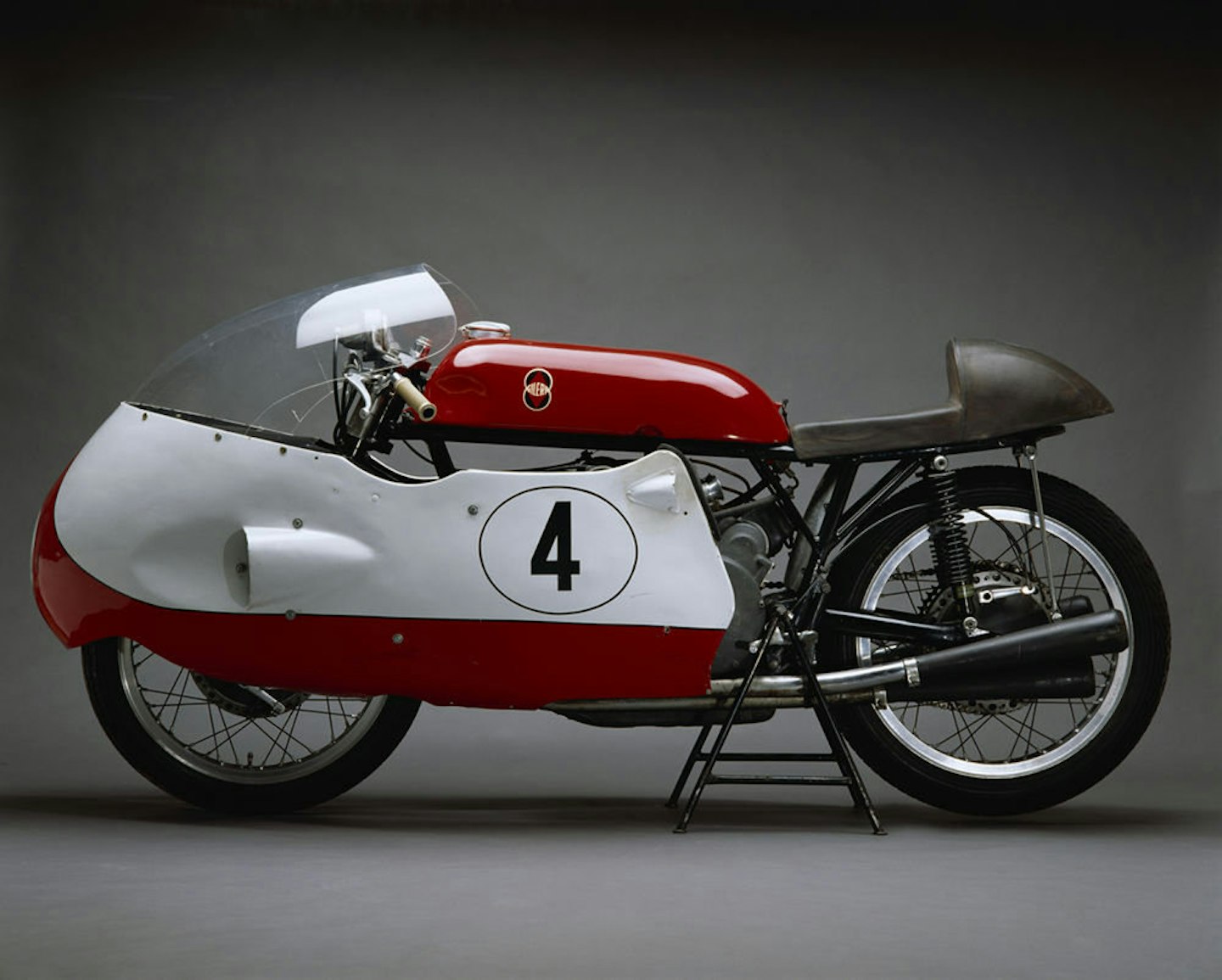
Some of the loveliest shapes ever crafted in motorcycling appeared on the so-called ‘dustbin’ fairings that flourished briefly in the 1950s. My favourites are Gilera’s 350 and 500cc four-cylinder racers, and Moto Guzzi’s 350 and 500cc singles plus its 500cc V8. The most frequently seen photos of a dustbin-faired bike are probably those of Bob McIntyre, whose full streamlining helped him to set the Mountain circuit’s first 100mph lap in the 1957 Senior TT on the Gilera.
Not surprisingly, dustbins spread to road bikes, and were used by the café racer set for some years after they disappeared from the racetrack (banned on the grounds that they could be unstable in crosswinds). To my knowledge, no motorcycle manufacturer ever offered a dustbin-faired model, but specialist companies such as Avon and DMD filled the gap for rockers who wanted to put together a real head-turning bike.
Even so, dustbins were a rare sight on the roads. In my teen years, the sight of Bonnies, Connies (700cc Royal Enfield Constellation), Dommies and Rocket Goldies fired my fantasies as much as the sight of Rita from the corner paper shop, but I can’t remember seeing a dustbin-fairedbike in the flesh (and it definitely didn’t happen with Rita).
Suddenly, in the 1980s, I found myself riding a dustbin-faired bike for the first (and only) time, when a Classic Bike reader, Paul Morin, offered us a blast on his wind-cheater. The occasion made for a double rarity, because the bike that his DMD fairing was attached to was a late- ’60s Matchless G15CSR. The G15CSR was a fusion of a Matchless singledowntube frame and a 745cc Norton Atlas engine – few were made, and Paul reckoned that by the ’80s there were only about 25 survivors in Britain.
What’s life like behind a ’bin? It felt pretty good as I floated down a Surrey dual carriageway at 80-90mph. “I really want you to give it a good thrashing,” Paul told me, so I took his Matchy to 5500rpm in top, 93mph according to the gearing.

Gilera dominated the 500 class in the ’50s, climaxing in two record-breaking ‘dustbin’ seasons
I wrote later: ‘Sheltered in the still air behind the DMD’s deep screen, and perched on top of this big, brawny motorcycle, I felt almost like a passenger in a piston-engined aircraft. The engine droned steadily beneath me... on my left cars slipped back into the past, like clouds sliding by an aircraft window. And everything I touched shuddered gently.
The clutch bit and the Dunlop TT100 sucked like a leech on the tacky black tarmac. The Matchless shuddered and roared like a Dakota straining down a runway for take-off, and it was time to change into second... and third. A glance behind revealed the cars as small rectangles in the distance.’
I hope those words capture something of the feeling of what it was like to ride a dustbin-faired bike in the rocker era – and the total disregard we had for speed limits in those pre-camera days! You can see inspiration from Gilera’s Grand Prix fairings in the DMD’s lines. The cooling slots on the fairing sides and the cut-out beneath the nose were designed to help cool the brakes and engine, although I have no idea how that front drum would have withstood a damn good thrashing down a twisting A-road.
DMD’s ’60s adverts said their fairing boosted a bike’s top speed by ‘over 12%’, although that claim was surely more a product of wishful thinking than timed tests with a range of different machines. How quick was a standard, unfaired G15CSR? Well, The Motor Cycle tested one in 1965 at 115mph, and recorded a 13.8-second standing quarter mile – a scorching time for the period. The following year, Motor Cycling tested the same bike at 109mph and 14.9 seconds. Maybe The Motor Cycle’s rider was better, or the bike fresher.
Incidentally, the registration number of Paul Morin’s bike was JBE 97E. I wonder whether it still survives, as an extremely rare road-going reminder of the brief but beautiful dustbin era?
